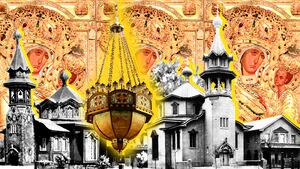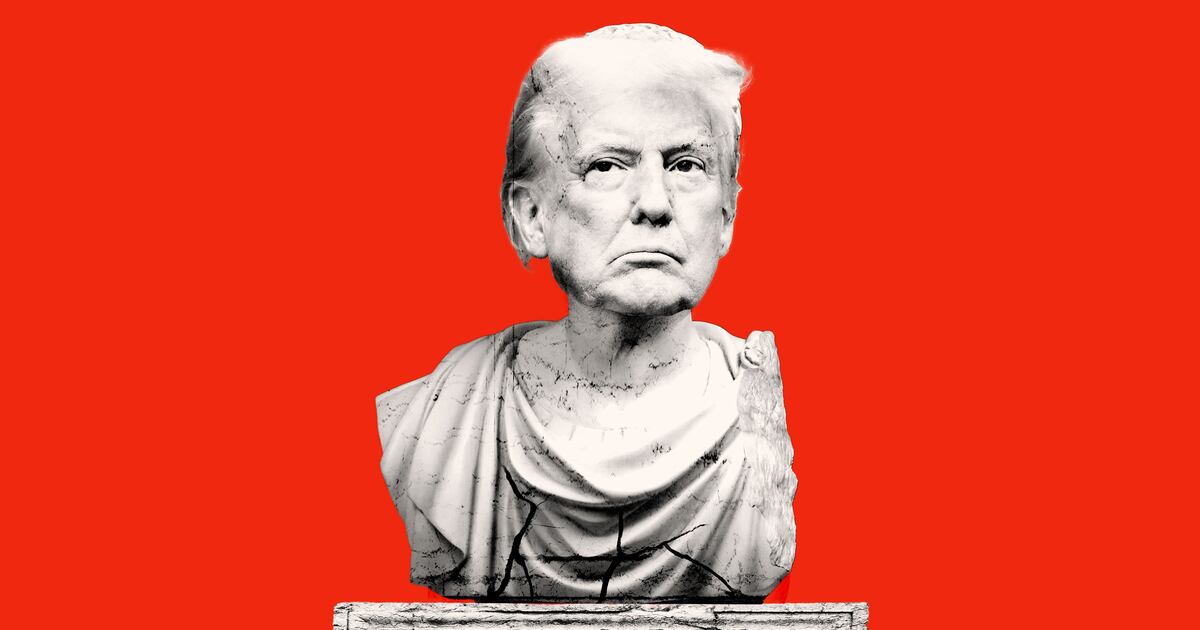For some tourists, the goal of travel is to stand on the spot where historical events took place: to follow in the footsteps of Jesus; follow the trade and pilgrimage routes of the Mayans, or stand on the field at Gettysburg. It’s an attempt to reach across time and grab hold of the past but, in most cases, we are speaking in generalities. The via dolorosa—the pilgrimage route that Jesus took to Calvary and his death—is slightly wrong. And while you can go to Gettysburg, you can’t necessarily pinpoint the exact spot where President Lincoln delivered his famous address (even though we do know the approximate place).
Now there’s a new exception to this rule: excavations at Hagia Sophia (“Holy Wisdom”) in Istanbul, the largest Christian cathedral built in the ancient world, have revealed a number of new and exciting discoveries. Among them is a disk identifying the exact spot where the emperor Justinian I would have stood.
He’s not as famous as Caesar or Augustus, but Justinian I was the most influential and important Byzantine emperor. When Justinian came to power Vandals, Huns and Franks had conquered much of the western Roman empire. Justinian would then spend over two decades driving these “barbarians” from Italy and North Africa and restoring order to the Roman empire. His most important contribution, however, was his Corpus Iuris Civilis, or the Code of Justinian. It wasn’t the first Roman legal code, but it did reform and incorporate earlier material. His legal code remained the foundation of the Byzantine legal system for 900 years, and its influence is felt even today. Over two centuries ago the historian Edward Gibbon could write of him that while “the vain titles of the victories of Justinian are crumbled into dust… the name of the legislator is inscribed on a fair and lasting monument.”
The cathedral itself has a lengthy and violent history. Construction on the current structures began in 537 CE. It was built on the site of an earlier church, known as the “Great Church,” which was burned down during rioting in the early fifth century. A second church, ordered by the emperor Theodosius II, was also almost entirely destroyed during the Nika Revolt (532 CE), an uprising that burned nearly half the city and resulted in the deaths of tens of thousands of people.
To replace it, Justinian decided to build a third, larger and more inspiring church; one that would dwarf its predecessors. Even at the time it was recognized as a structure of great architectural significance. And it became the site of important imperial rituals, including coronations. In the medieval period, the cathedral was, according to the Byzantine era historian Niketas Choniates, sacked by Crusaders at the behest of the Doge of Venice during the Fourth Crusade. It was then pillaged again in 1453, after Mehmet II captured Constantinople. When Mehmet II entered the cathedral after three days of brutal looting and pillaging, he commanded that it be converted into a mosque. Over the following centuries a number of sultans contributed to the maintenance and improvement of the building, then, in 1935, the building was converted into a museum.
Now researchers are discovering that the Byzantine structure was larger and more elaborate than previously believed. A team of archaeologists led by Ken Dark, an archaeologist at the University of Reading and Jan Kostenec, a founding member and director of the Czech Centre for Mediterranean Archaeology, worked at the site from 2004-2018. Many of their discoveries were made during an official restoration. When museum officials removed recently added plaster, Dark and Kostenec found mosaics, frescos, tiles, and graffiti from the ancient and medieval periods.
In their recently published book Hagia Sophia: An Archaeological Reexamination of the Cathedral of Byzantine Constantinople Dark and Kostenec announced that they have discovered what is likely to be the baptistery, which was previously believed to be lost. Some 1,400 years ago this structure would have hosted the baptism of the children of emperor, and initiated the offspring of elite society into the church. In addition, they discovered what may have been an ancient library underneath a large hall. The size of the potential library means that it would have been able to house thousands of scrolls, only adding to its importance as a site of learning and intellectual inquiry in the late antique world.
It was in another building, known as the northeast vestibule, that archaeologists discovered and identified a disc-shaped spot made out of a porphyry rock as the place where the emperor would have stood. The disk forms part of the original sixth-century floor of the church constructed by Justinian. Ken Dark told Live Science, “As such, it is probably the only place where it is possible to identify anywhere the precise spot on which the most famous Byzantine emperor stood.”
If you want to follow in the footsteps of one of history’s greatest legislators you may have to act soon: Hagia Sophia’s status as a museum is currently under threat. In 2018 and again last month President Erdoğan indicated that he intends to convert the museum back into a mosque.







